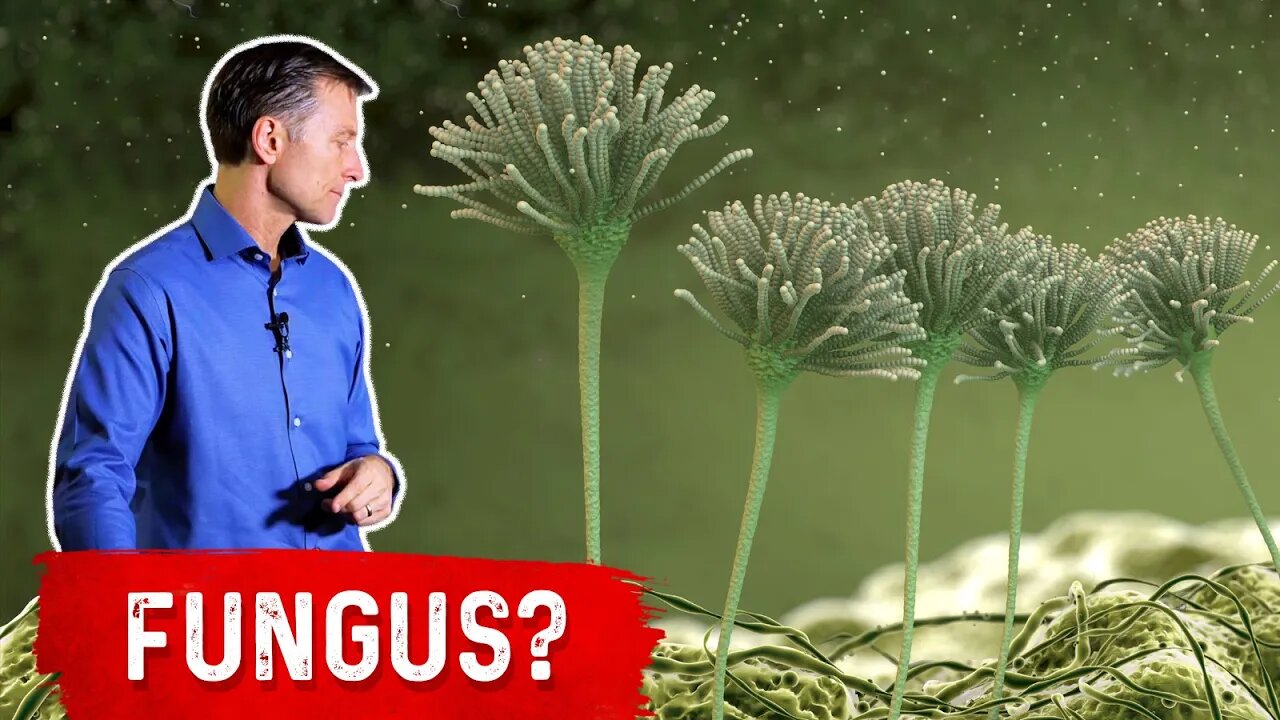Premium Only Content

Good Bacteria Keep Candida, Fungus and Yeast in Check
You don’t just have friendly bacteria in your gut. You have friendly fungus too!
Timestamps
0:00 Friendly fungus
0:30 What’s the difference between yeast and fungus?
0:52 Fungus in soil
1:50 What happens when you take an antibiotic
2:10 What to do if you have to take an antibiotic
2:45 Yeast love sugar
2:55 Glyphosate foods
3:15 Fermented foods
3:28 Benefits of friendly fungus
4:20 Bulletproof your immune system *free course!
Today, we’re going to talk about the friendly fungus that lives in your gut. You have both friendly bacteria and friendly fungus that live in your gut. In fact, there are over 100 different strains of friendly fungus that grow inside of you. Friendly bacteria keep the fungus in check so it doesn’t overgrow. There are also types of friendly yeast that live in the body. Yeast is small fungi.
Fungus is also essential in soil for plants. Without fungus, there would be a depletion of nutrients in the plant. The plant feeds the fungus carbohydrates. Fungi have many benefits for the body as well.
When you take an antibiotic, it kills bacteria, but it doesn’t kill fungus. Now, there is nothing to keep the fungus in check. This can cause an overgrowth of fungus, which can lead to different fungal infections.
This is why I believe it’s so important if you have to take an antibiotic to also take a friendly yeast, like saccharomyces boulardii. Doing this could potentially help prevent the overgrowth of fungus. If you already have a fungal infection, you could take this friendly yeast to help get rid of it.
It’s important to realize that yeast lives on carbohydrates, like sugar and milk sugar. It may be best to avoid all sugar.
Glyphosate in GMO foods can act like an antibiotic and create a similar situation. Unless you’re doing non-GMO foods, you could be susceptible to an overgrowth of fungus.
It’s also important to consume fermented foods, like sauerkraut, to help build up your friendly flora.
Other benefits of taking friendly fungus or yeast:
• It may help clear up diarrhea that’s caused by antibiotics
• It may help decrease the risk of getting H. pylori
• It may be good for gut infections
• It may help get rid of pathogenic fungal toxins
• It may help reduce the risk of getting candida albicans
Dr. Eric Berg DC Bio:
Dr. Berg, age 57, is a chiropractor who specializes in Healthy Ketosis & Intermittent Fasting. He is the author of the best-selling book The Healthy Keto Plan, and is the Director of Dr. Berg Nutritionals. He no longer practices, but focuses on health education through social media.
Follow Me On Social Media:
Facebook: https://bit.ly/FB-DrBerg
Instagram: https://bit.ly/IG-DrBerg
Anchor: https://bit.ly/Anchor-DrBerg
TikTok: https://bit.ly/TikTok-DrBerg
Send a Message to his team: https://m.me/DrEricBerg
Disclaimer:
Dr. Eric Berg received his Doctor of Chiropractic degree from Palmer College of Chiropractic in 1988. His use of “doctor” or “Dr.” in relation to himself solely refers to that degree. Dr. Berg is a licensed chiropractor in Virginia, California, and Louisiana, but he no longer practices chiropractic in any state and does not see patients so he can focus on educating people as a full time activity, yet he maintains an active license. This video is for general informational purposes only. It should not be used to self-diagnose and it is not a substitute for a medical exam, cure, treatment, diagnosis, and prescription or recommendation. It does not create a doctor-patient relationship between Dr. Berg and you. You should not make any change in your health regimen or diet before first consulting a physician and obtaining a medical exam, diagnosis, and recommendation. Always seek the advice of a physician or other qualified health provider with any questions you may have regarding a medical condition.
#keto #ketodiet #weightloss #ketolifestyle
Thanks for watching.
-
 5:12
5:12
Dr. Eric Berg
3 days ago#1 Vitamin D DANGER You Absolutely Must Know!
6.29K9 -
 LIVE
LIVE
Anthony Rogers
1 day agoEpisode 376 - Todd Schowalter
72 watching -
 LIVE
LIVE
megimu32
2 hours agoOTS: Movie Tie-In Games + Remakes: Let’s Play Memory Lane
140 watching -
 LIVE
LIVE
Adam Does Movies
10 hours ago $0.18 earnedTalking Movies + Ask Me Anything - LIVE
67 watching -
 1:17:18
1:17:18
Glenn Greenwald
1 day agoWhat are CBS News' Billionaire Heirs Doing with Bari Weiss? With Ryan Grim on the Funding Behind It; Europe Capitulates to Trump Again | SYSTEM UPDATE #494
94.4K63 -
 1:43:49
1:43:49
RiftTV
4 hours agoCNN Calls Black NY Shooter WHITE, Cincinnati FATIGUE | The Rift | Guest: Braeden Sorbo, 2Protects1
37K13 -
 4:21:04
4:21:04
LumpyPotatoX2
5 hours agoKilling Floor 3: Rampage & Chaos - #RumbleGaming
9.85K -
 LIVE
LIVE
BrancoFXDC
5 hours ago $0.51 earnedPlaying Ranked Warzone - Pursuit of Diamond Rank
94 watching -
 1:11:41
1:11:41
Omar Elattar
5 hours agoThe Brain Experts: "Your Overthinking Problem Has A Physical Solution & We Can Show You!"
13K1 -
 DVR
DVR
Mattnifico
4 hours agoREPLAYING EVERY FORZA HORIZON GAME - Forza Horizon 1 (Part 2)
4.43K